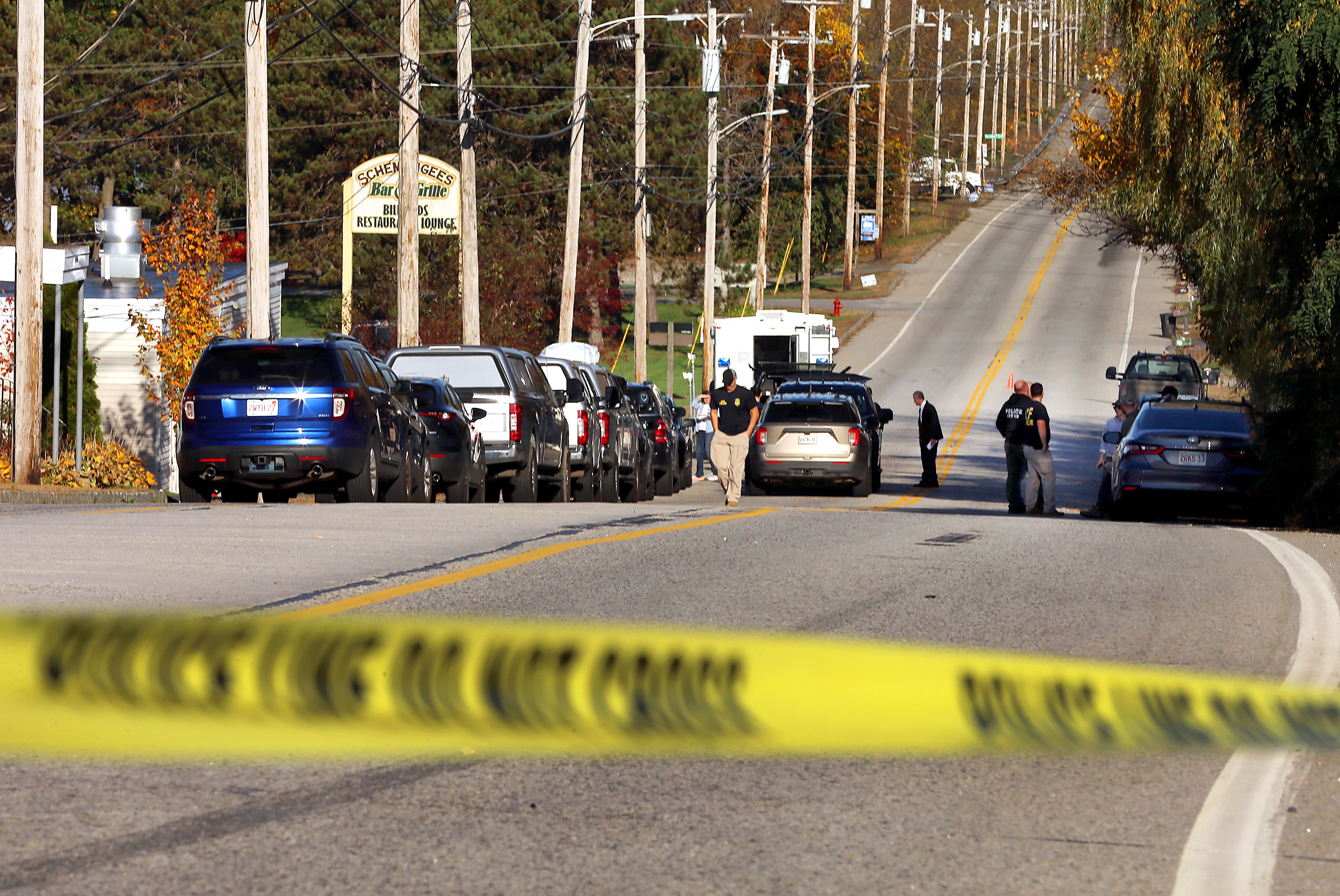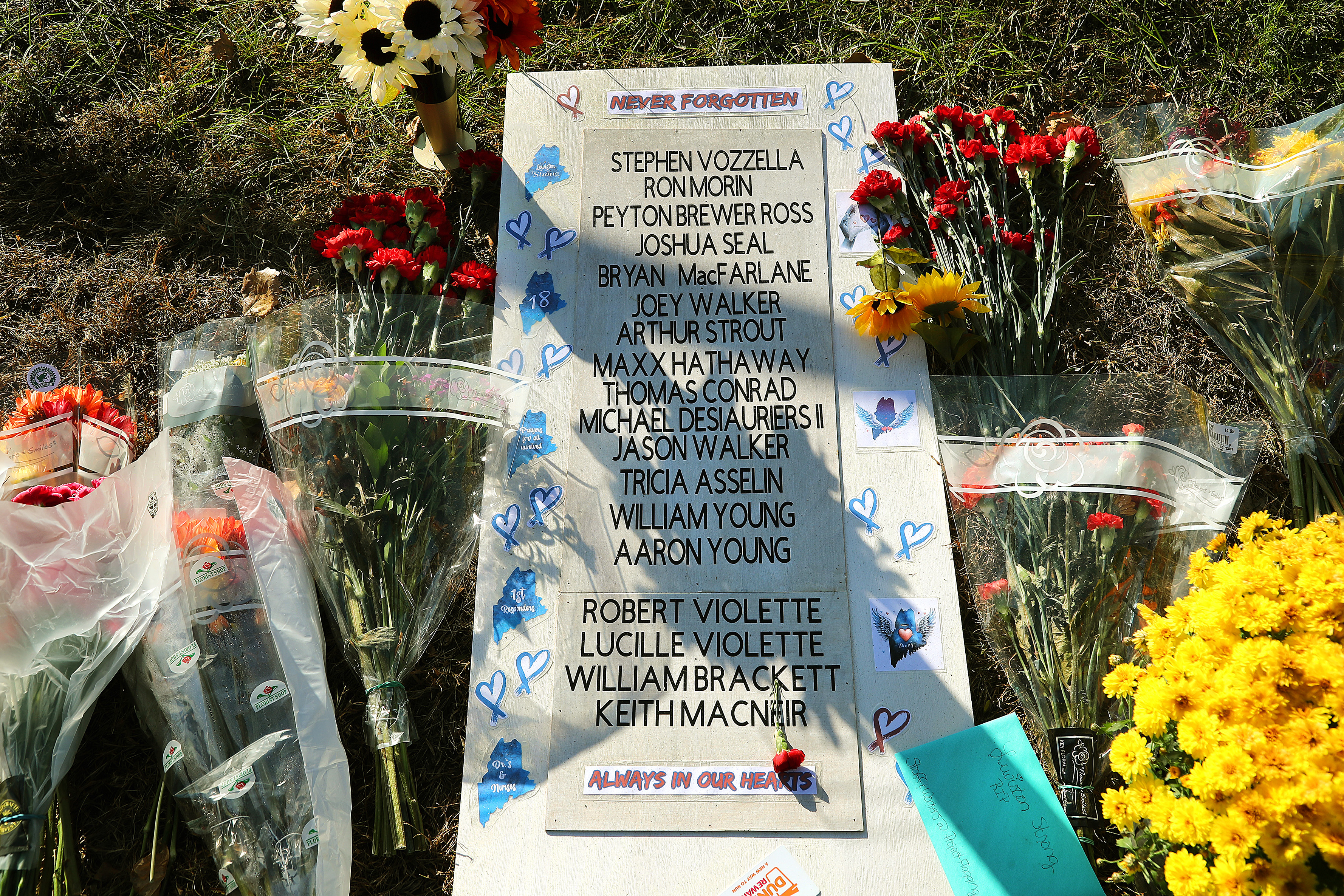Brain injury experts are cautioning against drawing conclusions from newly released and limited information about evidence of a brain injury in an Army reservist who killed 18 people last year in Maine’s deadliest mass shooting.
Boston University researchers who analyzed a sample of Robert Card’s brain tissue said Wednesday they found evidence of traumatic brain injury. The analysis, requested by the Maine medical examiner, found degeneration in the nerve fibers allowing communication between different areas of the brain, inflammation and small blood vessel injury, according to Dr. Ann McKee of the university’s Chronic Traumatic Encephalopathy Center.
WATCH ANYTIME FOR FREE
Stream NBC10 Boston news for free, 24/7, wherever you are. |
The Lewiston shooter had been an instructor at an Army hand grenade training range, where it is believed he was exposed to repeated low-level blasts. It is unknown if that caused his brain injury and what role the injury may have played in his declining mental health before he opened fire at a bowling alley and bar in Lewiston on Oct. 25.
McKee made no connection between the injury and the gunman's violent actions.
Get updates on what's happening in Boston to your inbox. Sign up for our News Headlines newsletter.
“While I cannot say with certainty that these pathological findings underlie Mr. Card’s behavioral changes in the last 10 months of life, based on our previous work, brain injury likely played a role in his symptoms,” McKee said in a statement released by the Card family.
Dr. Alexandra Filippakis, a neurologist who has treated members of the military and others for traumatic brain injuries, said Thursday she would not conclude brain injury played a role in the Maine shooter's behavior based on McKee’s description of her findings.
“TBI is a very broad diagnosis, and it looks different in different people. Not everybody has the same symptoms. Not everybody has the same severity of symptoms,” Filippakis said. “There’s no way that you could, with certainty, link that to a particular action.”
Filippakis, who works at Wentworth-Douglass Hospital in Dover, New Hampshire, said the connectivity damage McKee described is common and can have many causes, including aging, high blood pressure and smoking.
“That could mean so many different things,” she said. “You certainly can’t draw any conclusions from that piece of information.”
But James Stone, a University of Virginia radiologist who has studied repeated low-level blast exposure in the military, said changes to the Lewiston gunman's brain “seemed pretty profound.”
Such injuries can affect impulse control and emotional regulation, he said, and though he doesn’t know if those parts of his brain were affected, “it’s certainly hard to imagine that the level of brain changes that we’re seeing in some way did not contribute to his behavior.”
Chris Dulla, a professor and interim chair of neuroscience at Tufts School of Medicine, said he was surprised that researchers found no evidence of chronic traumatic encephalopathy, which has plagued many professional football players.
“It doesn’t seem to be as cut and dry,” he said. “What that speaks to is how varied traumatic brain injuries are, and how difficult they can be to diagnose, even in the postmortem brain sample, when you can study every detail.”
The findings highlight the connection between brain injuries and underlying psychological conditions, Dulla said.
“If you’re already struggling with some kind of psychiatric condition or at risk for some kind of psychiatric problem, brain injuries might be something that can kind of push you over the edge and have that change really come front and center when it might have been sort of a minor underlying thing before,” he said.
Experts say traumatic brain injury can lead to headaches, mood changes, memory loss and sleep issues. Stone said his research has shown repeated exposure to even low-level blasts can result in changes to the brain. The Department of Defense has been “very engaged” in studying the issue, Stone said, and a panel on which he serves is expected to release new guidelines in May for both the U.S. military and NATO allies.
“They’ve been very proactive about this,” he said.
An Army spokesperson on Thursday called the lab findings regarding the Maine shooter's brain “concerning” and said they “underscore the Army’s need to do all it can to protect Soldiers against blast-induced injury.”
In addition to updating the guidance on risk mitigation, the Army plans to launch a public safety campaign and will begin requiring documentation of training environments and tracking of exposed personnel.
Sean Hodgson, the Lewiston gunman's close friend and a fellow reservist, said Thursday that safety was a top priority at their training range and the blast exercises were well controlled.
“You feel it through you, but it’s mild,” he said.
“I never heard him complain about the blasts,” Hodgson said. “In my opinion it’s one of the safest ranges to be on. I never heard him complain about the blasts.”
Six weeks before the shooting, Hodgson texted an Army supervisor about his growing concerns about his friend, saying, “I believe he’s going to snap and do a mass shooting.”
That Sept. 15 message came months after relatives warned police that the shooter had grown paranoid and said they were concerned about his access to guns.
He was hospitalized in a psychiatric unit for two weeks in July after shoving a fellow reservist and locking himself in a motel room. In August, the Army barred him from handling weapons while on duty and declared him nondeployable.
In their first public comments since the shooting, the gunman's family members apologized Wednesday for the attack, saying they are heartbroken for the victims, survivors and their loved ones.
“We are hurting for you and with you, and it is hard to put into words how badly we wish we could undo what happened,” they said in a statement. “While we cannot go back, we are releasing the findings of Robert’s brain study with the goal of supporting ongoing efforts to learn from this tragedy to ensure it never happens again.”




